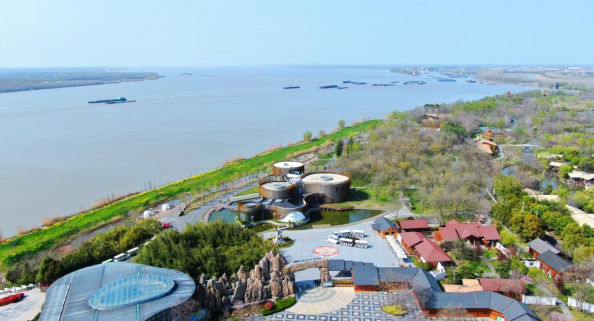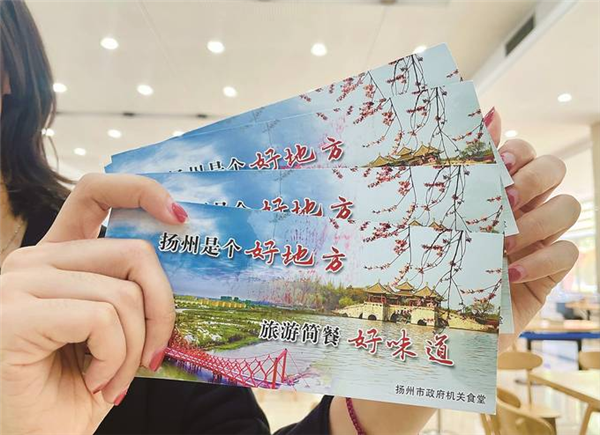According to Chinese legend, after harnessing rivers on the Chinese land, Da Yu divided the land mass into nine regions with Yangzhou covering present-day Jiangsu, Zhejiang, Jiangxi and Fujian. It was a land of legends.
The Dynasty of Zhou established the state of Han in Yangzhou. In late Spring and Autumn, Pu Cha, the King of the State of Wu, spearheaded his army northward in a hegemonic move. He conquered the State of Han and dug a canal and built a city. The city of Yangzhou gradually took shape. When the state of Chu defeated the State of Yue, it remodeled the city and renamed it Guanglin. It was called Yangzhou during the ninth year of the reign of Emperor Kai of the Sui Dynasty. As an administrative area, Yangzhou was historically called Hancheng, Guanglin, Jiangdu, Hanjiang, Ganquan, Weiyang with unique features of each.
Geographically speaking, the city was strategically located. Lying on the left bank of the Huaihe River, the city stood on an estuary at the point it enters the sea. The local economy was very prosperous, thanks to abundant resources. Bao Chao vividly describes the prosperous city of Yangzhou during the Eastern and Western Han dynasties in his "Ode to the City of Wucheng".
Emperor Yang Guang of the Sui Dynasty, ordered the digging of the Grand Canal that links the Yangtze River in the south with the Yellow River in the north. This made Yangzhou all the more important economically. During the 14 years of his rule, Emperor Yang of the Sui Dynasty built ten palaces and luxurious towers which became his retreat. A peasant uprising overthrew the Sui Dynasty and Yang Guang had to find eternal rest in a lonely tomb in Leitang.
Yangzhou became even more prosperous during the Tang,and by the sixth year of the reign of Emperor Tian Bao, there was a population of more than 470,000. Included in this number were more than 5,000 Arabian merchants, Japanese monks and because it was also a cultural center that attracted scholars from all over the country, there were many students who came to study Buddhist scriptures and Chinese culture.
Yangzhou endured many upheavals during the more than 800 years from the Song and Yuan to the Ming Dynasty. Nevertheless, its charm and beauty has never been damaged by the ravages of war and political chaos. In his travelogue, Marco Polo said that when he came to Yangzhou he felt as if he had ventured into a wonderland.
The Qing court attached great importance to the historical role of the city. With a view to stabilizing the political situation in the country, developing the economy and appeasing the elite of the ethnic hans, the Qing emperor did their share in invigorating the city. Emperor Kangxi and Emperor Qianlong made six inspection tours of Yangzhou and pushed it to the peak of prosperity again. A great number of gardens and buildings were constructed and a wealth of paintings and calligraphic works were created at a unique school of culture --the Yangzhou school.
Now, people may go to the city either in flowering spring or golden autumn. You may, like Emperor Qianlong, board the dragon boat from the Royal Dock and ride to Shouxi Lake, on the way appreciating the 24 scenes built by the big Qing salt merchants to please the emperor. lt's like the poem says, "Willow trees line the river while pavilions and towers stretch to the foothills."
The gardens on the lakeside all have their unique features. Geyuan Garden features rock formations symbolic of the four seasons of the year and the Heyuan Garden encompasses the quintessence of Chinese and Western architectural style. And there are other gardens such as Xiaopangu, Pianshisanfang, Quanshitongtian, Yanchunyuan, Shuihuige, Xiangyinglang, Chanying Villa and Wenyuesanfang.
At the end of the Shouxi Lake on Shugang Hill stands the Daming Temple where Monk Jianzhan of the Tang Dynasty started his journey eastward to Japan. E'yang Xiu, a great scholar of the Song Dynasty, built the Pingshan Pavilion when he was the mayor of the city. The royal gardens of Emperor Kantqxi and Emperor Qianlong are now well stocked with a wealth of cultural relics. The Museum of Han Tombs north of the Shugang hill now displays the most perfect tomb system of the day.
With its long history, the city offers much to the visitor including unique handicraft and cuisine. In the great treasure house of Chinese culture. Yangzhou, now and then, is indeed a city for you to explore forever.
more





